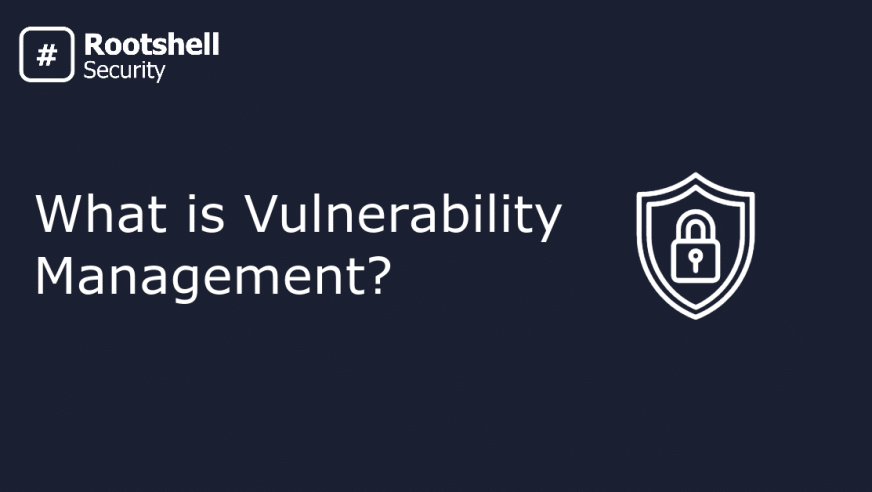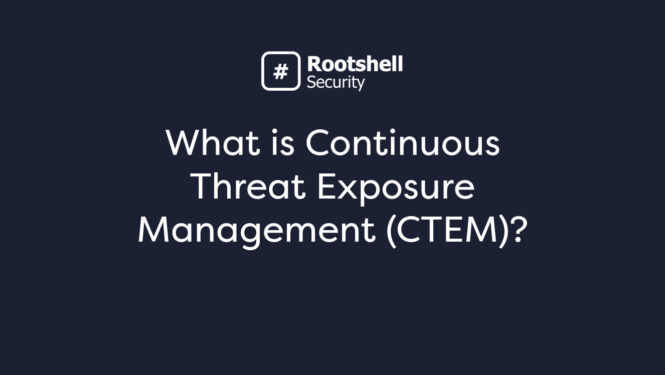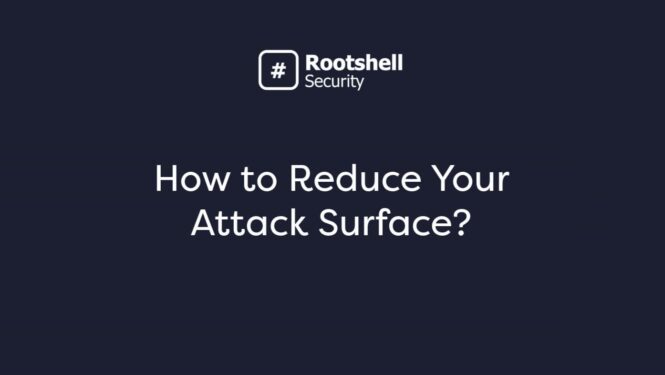In today’s dynamic business landscape, safeguarding critical assets is paramount. Every organization operates within a digital realm, and within this realm lies a trove of valuable data, applications, and networks. Yet, the digital world is not without its perils.
It’s a landscape where cyber threats loom large, seeking vulnerabilities as entry points to compromise security. In this blog post, we will explain what is vulnernability management, and illuminate its pivotal role in fortifying your defenses.
As keepers of these digital assets, organizations confront an unrelenting stream of cyber adversaries, each vying to breach the security perimeter and exploit known vulnerabilities. Vulnerability management offers a strategic process of identifying, assessing, prioritizing, and mitigating these vulnerabilities.
Our journey begins with the fundamentals, defining what vulnerability management truly means and emphasizing its significance. We’ll then navigate the intricate pathways of this practice, exploring the tools, methodologies, and use cases that allow security teams to stay one step ahead of potential threats.
Moreover, we’ll delve into the lifecycle of the latest developments and trends in vulnerability management, including automated vulnerability management, continuous monitoring, and the integration of cloud security—all vital components of a robust cybersecurity strategy.
But that’s not all. As we go through, we’ll introduce you to our platform, a trusted ally in the realm of vulnerability management. Discover why countless organizations choose to partner with us to fortify their defenses and protect their digital assets from security weaknesses.
So, let’s kick things off, as we demystify vulnerability management and empower you to enhance your cybersecurity posture.

Vulnerability Management: How It Works
Vulnerability management is a proactive approach to identifying, assessing, prioritizing, and remediating security vulnerabilities within an organization’s systems, applications, and network infrastructure. This process aims to minimize the attack surface and reduce the risk of cyber threats in the context of risk management.
At its core, vulnerability management involves the continuous vulnerability monitoring of the IT environment to identify new vulnerabilities and assess existing ones. Security teams use specialized tools, known as vulnerability scanners, to conduct regular vulnerability scans. These scans are designed to identify vulnerabilities and other weaknesses that could be exploited by malicious actors.
Gartner “Vulnerability management remains a critical security operations activity that helps organizations identify assets, mitigate threats and meet compliance mandates.” (Marketing Guide for Vulnerability Assessment, August 2023)
Differences Between a Vulnerability, Risk, and Threat
Before diving deeper into vulnerability management, it’s essential to understand the distinctions between key terms often used interchangeably:
- Vulnerability: A vulnerability is a weakness or flaw in a system, application, or network that could be exploited to compromise its security.
- Risk: Risk refers to the potential harm or damage that could result from the exploitation of a vulnerability. It takes into account the likelihood of an attack and the potential impact.
- Threat: A threat is a specific instance or potential event that could exploit a vulnerability, leading to a security breach or compromise.
Ranking and Categorizing Vulnerabilities
In a world rife with security vulnerabilities, it’s crucial to prioritize which ones to address first. This is where risk-based vulnerability management and penetration testing services come into play. Vulnerabilities are ranked based on factors like their cvss scores, potential impact, and the likelihood of exploitation. This ranking helps security teams focus their efforts on mitigating the most critical vulnerabilities first.
Difference Between Vulnerability Management and Vulnerability Assessment
While vulnerability management and vulnerability assessment are related, they serve different purposes. Vulnerability assessment primarily involves the identification and assessment of vulnerabilities. On the other hand, vulnerability management encompasses a broader set of activities, including prioritization, remediation, and continuous monitoring.
Benefits of Vulnerability Management
Effective vulnerability management offers numerous benefits to organizations, including:
- Improved Security Posture: By systematically addressing vulnerabilities, organizations enhance their overall security posture, making it harder for attackers to breach their systems based on insights from the national vulnerability database.
- Reduced Attack Surface: Vulnerability management helps reduce the attack surface by identifying and mitigating potential entry points for cybercriminals.
- Compliance Maintenance: Many regulatory frameworks require organizations to have a robust vulnerability management program in place to ensure compliance.
Automating Your Vulnerability Management Process:
To keep up with the ever-changing threat landscape, organizations are increasingly turning to automation in vulnerability management. Automation can streamline the process, allowing security teams to respond swiftly to emerging threats and focus on more complex tasks.
Our automation centre drives down the time it takes for organizations to receive, triage, and remediate results even further.
Users can create their own rules for how an issue should be delegated once it is discovered by a test. Vulnerabilities can be assigned to the appropriate colleague or team as soon as they are reported in the platform, with no manual effort required.
Rules can be set for vulnerabilities based on their priority status, such as issues affecting mission-critical assets that are being actively exploited. This will ensure the most critical issues will always be prioritized and assigned as soon as possible.
What to Look for in Your Vulnerability Management Solution
When selecting a vulnerability management solution, consider factors such as ease of use, scalability, reporting capabilities, and integration with other security tools. A robust solution should provide real-time visibility into your security posture and simplify the remediation process.
Now, let’s introduce the Rootshell Platform, we are a leading provider of cutting-edge vulnerability management solutions, and discuss why clients should choose us for their cybersecurity needs.
Introducing Our Vulnerability Management Platform: Your Trusted Vulnerability Manager
Our Approach to Vulnerability Management Process
At Rootshell, we understand that safeguarding your digital assets is paramount. With the ever-increasing complexity of cyber threats, having a comprehensive vulnerability management program is no longer an option; it’s a necessity.
Here’s why you should choose Rootshell’s Platform as your partner in vulnerability management:
1. Expertise and Experience
Rootshell Security boasts a team of seasoned cybersecurity experts with over 20 years of experience in vulnerability management. Our experts stay ahead of emerging threats and are well-versed in the latest trends and techniques used by cybercriminals. When you choose Rootshell, you benefit from the collective knowledge of our experts, ensuring your organization is well-protected.
2. Cutting-Edge Technology
We leverage state-of-the-art vulnerability management tools, AI-led Active Exploits and next-generation solutions to provide you with real-time insights into your security posture. Our technology is designed to identify, assess, and remediate vulnerabilities quickly and effectively, minimizing your exposure to potential threats.
3. Increase your efficiency
Save significant admin time by letting our platform mark issues as remediated on your behalf. The platform will compare your scans and highlight any vulnerabilities that are no longer present within your estate.
This is particularly helpful for managing large digital estates and is, yet another way our platform empowers you to drive down your time-to-remediate.
4. Tailored Solutions
At Rootshell, we understand that every organization is unique. We work closely with our clients to develop customized vulnerability management programs that align with their specific needs and risk tolerance. Whether you operate in healthcare, finance, or any other industry, we have the expertise to tailor our solutions to fit your requirements.
5. Continuous Monitoring
Our commitment to your security doesn’t stop after the initial assessment and remediation. We offer continuous monitoring services to ensure that your organization remains protected in the face of evolving threats. With our service, you can have peace of mind knowing that your defenses are constantly updated.
6. Proven Track Record
We have a proven track record of helping organizations of all sizes enhance their security postures. Our clients have experienced a significant reduction in security risks and an improved ability to maintain compliance with industry regulations.
In conclusion, when it comes to vulnerability management, choosing the right partner is critical. Rootshell combines expertise, cutting-edge technology, tailored solutions, and a commitment to continuous monitoring to ensure that your organization is well-protected against today’s cybersecurity threats. Don’t leave your security to chance; partner with Rootshell Security and strengthen your defenses today.

Ready to take the next step in enhancing your cybersecurity? Contact us today to learn more about our comprehensive vulnerability management solutions and how we can help you safeguard your digital assets. Don’t leave your security to chance; partner with Rootshell Security and strengthen your defenses using the common vulnerability scoring system today.
Protect your organization—choose Rootshell.



